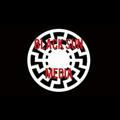
🌲卐Black Sun Media卍🌲
Show more
The country is not specifiedThe language is not specifiedThe category is not specified
291Subscribers
No data24 hours
No data7 days
No data30 days
- Subscribers
- Post coverage
- ER - engagement ratio
Data loading in progress...
Subscriber growth rate
Data loading in progress...
Show all...
England-Ireland-Scotland | David Lane
In this video, and read an article by David Lane in which he discusses the idiocy of the fratricidal wars waged by these three great nations. David Lane playlist:
https://www.bitchute.com/playlist/EL2JI7nJHZVO/Have you heard of this hateful book coming out on June 16th?
Never read it, never. This book is dangerously based.
Stay tuned, Lovers.
Amazing
REPEATEDLY, Lord Krishna said Arjuna, the SOUL (Atman) within the body is indestructible and we should not cry when someone dies.
Lord Krishna said:
"Arjuna, that which pervades the entire body is indestructible. No one can destroy the imperishable soul (Atman.)"
(Bhagavad Gita Chapter 2:17)
Lord Krishna said:
"Oh! Arjuna, the Soul (Atman) that dwells in the body of all beings is eternal and is indestructible. Therefore, you should not grieve for anybody, when they die."
(Bhagavad Gita Chapter 2.30)
Lord Krishna also said:
"As a person changes worn out clothes for new ones, at the time of death, the immortal soul ATMAN sheds the worn out BODY and enters a NEW ONE.
( Bhagavad Gita 2: 22)
This happens again and and again until the person attains SELF REALIZATION.
🚩🙏Jay Sree Krishna 🚩🙏
Join @hinduism_and_science
卐
Against the Decay 卐
“Not an evening passed without our party comrades, returning home, being attacked by the red street mob and sometimes badly wounded. The organization itself, however, had already so consolidated itself that the blood spilled just bound us more closely..
We still could not hold any large fighting assemblies, because the organization did not have the inner strength for it. We had to limit ourselves to gathering the party comrades with sympathizers and fellow travelers in small halls week after week and in our speeches delve less into relevant daily issues than to explain the programmatic fundamentals of our worldview and to so hammer it into the heads of the party comrades that they could so-to-speak recite it in their sleep. The first core of the party thus came together into a solid structure. The organization had a support, the idea was deepened in incessant enlightenment work.”
- Dr. Joseph Goebbels
STRUGGLE FOR BERLIN [1932]
BOOK 1: FRESH START
————————————————
@NSPolicy"The question of instilling national pride in a people is, among other things, primarily a question of creating healthy social conditions as a basis for the possibility of educating the individual. For only those who through school and upbringing learn to know the cultural, economic, but above all the political greatness of their own fatherland can and will acquire inner pride in the privilege of belonging to such a people."- Mein Kampf, Volume 1 Chapter 2
The date is Monday June 14th, Year of our Führer 132
6/14/132 YF
